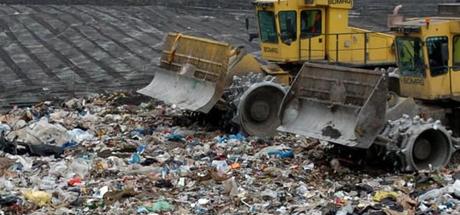
An incinerator can destroy and remove at least 99.99 percent of each harmful chemical in the waste it processes. When some extremely harmful chemicals are present, EPA requires that an incinerator show it can destroy and remove at least 99.9999 percent of contaminants in the waste. Ash remaining at the bottom of the combustion chambers likely will require disposal in a hazardous waste landfill. However, the amount of material that requires disposal after incineration is much less than the initial amount of waste that was burned.
The following are types of incinerators:- ROTARY KILN
- FLUIDIZED BED
- LIQUID INJECTION
- MULTIPLE HEARTH
- CATALYTIC COMBUSTION
- WASTE-GAS FLARE
- DIRECT-FLAME
Of these, rotary kiln, fluidized bed, and liquid injection are the most, prevalent in industry because of their applicability to large scale use and their versatility.
One other characteristic that all three types of incinerators (rotary kiln, fluidized bed, and liquid injection) share is that they can all be operated in a pyrolysis or oxygen starved mode. Wastes with high caloric value that are capable of releasing great heat content are most appropriate for this kind of operation.
DIRECT-FLAME INCINERATORS
All of the current Inciner8 range are known as Combustion Incinerators
The optimal temperature for combustion of mixed solid waste is in the range from 1400-1600 degrees f.
BENEFITS:- WASTE VOLUME REDUCTION
- DESTRUCTION OF COMBUSTIBLE TOXINS
- DESTRUCTION OF PATHOGENICALLY CONTAMINATED MATERIAL
- ENERGY RECOVERY
- USUALLY SPECIFIC OR 'TAILOR-MADE'
- MORE CONSISTANT WASTE STREAM
- HIGHER TEMPERATURES MAY BE NECESSARY
- STANDARDS FOR DESTRUCTION OF HAZARDOUS WASTE ARE SET AT THOSE THAT WILL DESTROY PCB'S.
- MORE COMMON
- LESS CONSISTENT WASTE STREAM
- PRE-TREATMENT IS USUALLY NECESSARY
- BATCH OR CONTINUOUSLY LOADED

